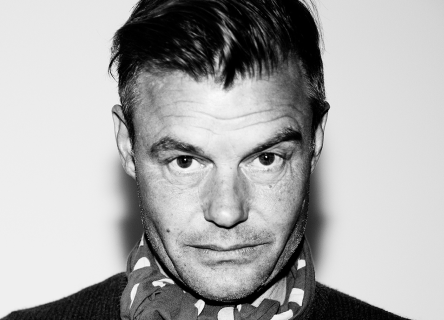

Timeless Signature

Photograph of Louise Bourgeois (1996) and Quentin Tarantino (2012) by Marc Hom.
But Hom does more than elevate celebrities with his searching gaze. Consider the campaign he made for Triumph underwear company. Twenty “ordinary” women were selected to model underwear. Portrayed through Hom’s lens, they looked like stars and were much admired as such.
“There’s a lot of psychology behind taking a picture,” relates Hom. “It has something to do with putting myself on the same footing as the person I’m photographing, so I can get through to the personality. And of course, it also has something to do with making the person who’s being photographed comfortable and treating her or him in the way you’d wish to be treated. That’s become easier with age, and because these days a lot of the people I photograph know me, he said. “But I still remember when I was twenty-eight years old and had to photograph Lauren Bacall. Facing her made a huge impression.”One of the actors Hom has photographed numerous times is American actress Anne Hathaway, who is known for roles including “Interstellar,” “Oceans Eight,” “Becoming Jane” and “The Devil Wears Prada.” Hom photographed her when she was just twenty-two years old and on the verge of her breakthrough. Since then, he has taken several portraits of her throughout her career. An image of Hathaway is featured on the cover of his most recent book, Profiles, and Hathaway has written the foreword.
“I remember that I was at our summer house in Denmark waiting for her email. The book was behind schedule and I told the publisher that we had to give her a little more time, because she had said that she wanted to write it. When it finally came, and so close to the deadline, I was deeply touched when I read it,” remembers Hom. Hathaway wrote: “Marc was different. He didn’t push; he hung back. He listened and created around him an atmosphere of stillness and gentleness. He didn’t try to make me something I wasn’t. He didn’t judge who I was. It was the first time I felt beautiful.” “I was touched by what she wrote about me,” Hom acknowledged with a slight change in his tone of voice.
“The best of all is, of course, that she likes the pictures I took of her. That was a success.” He continues, “I always strive to take pictures that I think are good now and that will also be appreciated in ten or twenty years by both the subject and by me. My signature is probably timelessness. It has never meant anything to me to create something that might be up-to-date now but might not endure in the long run.”
We go back to the start, to Hom’s archives, that, funnily enough, point both forward and backward. On one-point Hom’s perspective has clearly changed over time. “I used to have a clear idea of which expression I wanted to produce in the picture. I had an idea and I followed it. Now I am more open to what happens in the moment. I am ready for the unexpected and spontaneous things that happen,” he explained.
His father, Jesper Hom, was Denmark’s answer to the legendary French photographer Henri Cartier-Bresson. “My father did a totally different kind of photography than what I do. He stood on a corner and waited for the right moment to appear. I have had another approach, but now it’s changing,” says Hom.
And his classic, graphic style? Hom thinks that people can likely tell that he is Danish “It probably has something to do with the clean lines. As Danes we are brought up knowing that good design means something. You buy something that lasts and that you’ll be happy with for a long time. I still have a table by Poul Kjærholm, for example, that I bought when I was quite young. And that’s how it is with Ole Mathiesen’s watches too. They’re classic and we can keep looking at them as time goes by.”
The same is true of Marc Hom’s portraits, which are being purchased by collectors of art photography.
“I’m happy about that because it means that I’ve hit the mark – also in the pictures I took many years ago.”